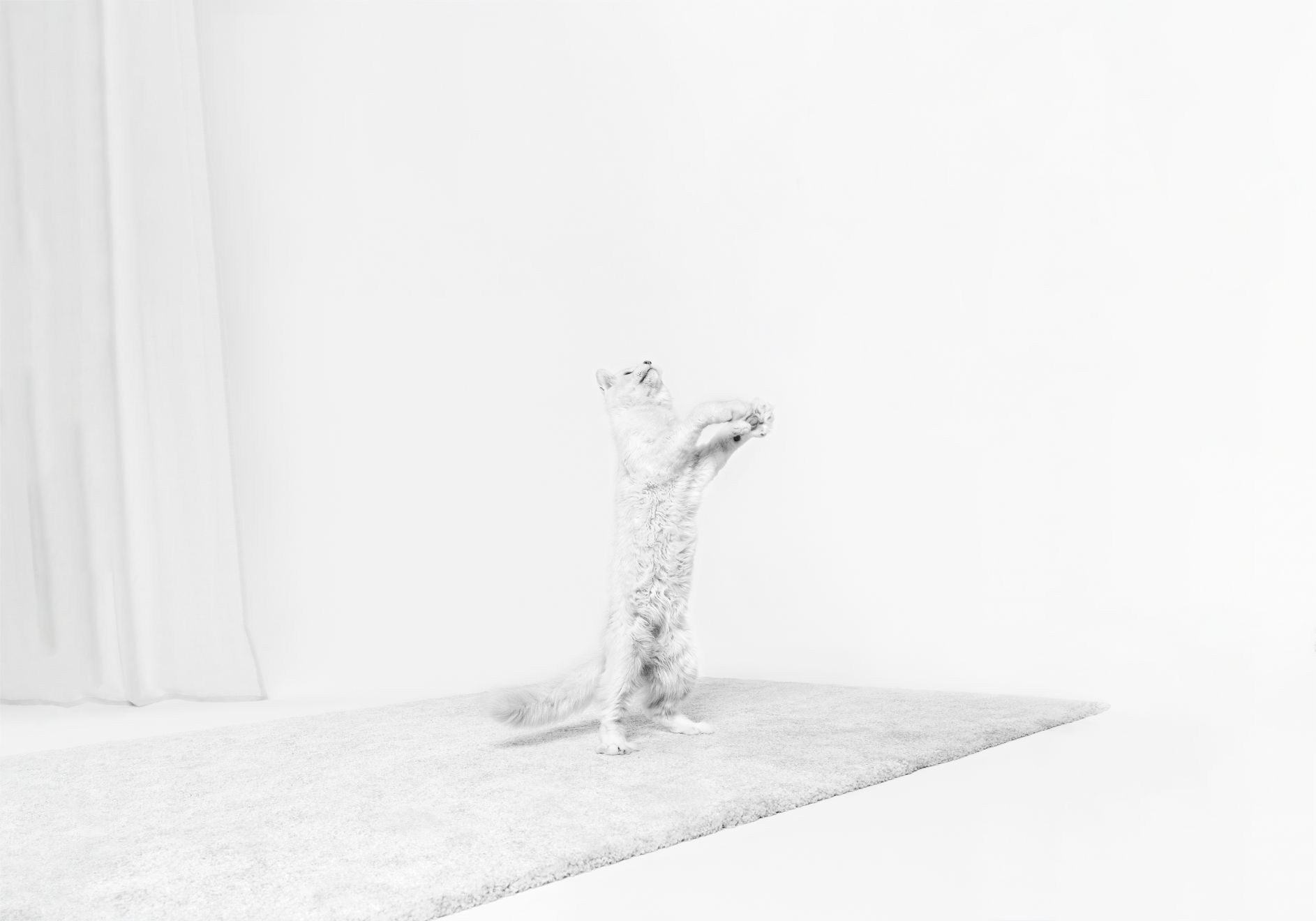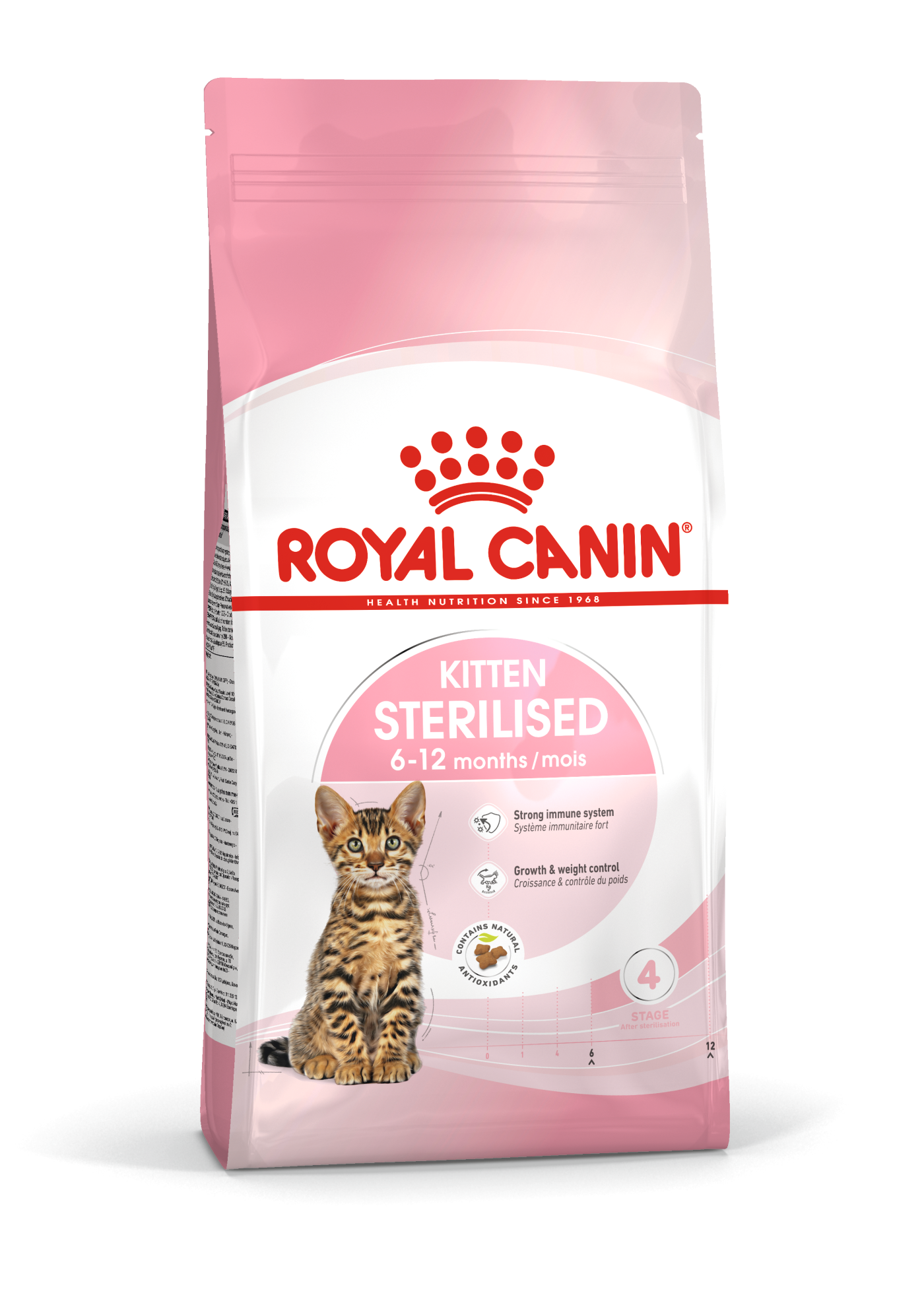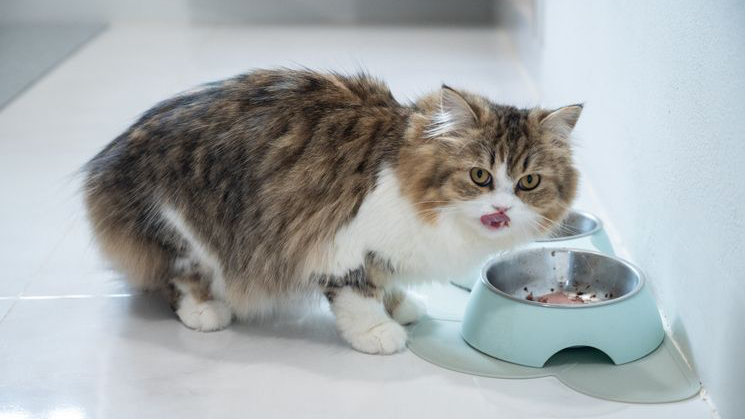
Discover our Kitten Growth Programme
Your kitten comes into the world depending on their mother for everything that they need. That will rapidly change as they evolve into a curious kitten dashing around and getting into everything! Your kitten’s development is fast during kittenhood – they hit milestones here, there and everywhere – but their immune system and brain development evolve at a slower pace. A healthy kitten diet is key to providing your new family member with all essential nutrients.
Our Kitten Growth Programme will guide you on nutrition for each stage of your kitten’s life. We’re here to help you set your kitten up with a solid foundation for their future health.
On this page, you will find the following:
1. Spotlight on kitten growth and development
Kittenhood can pass by in the blink of an eye, as the growth rate is rapid. With each new phase comes delightful surprises and plenty of entertainment. But all of this change means Kittenhood can pass by in the blink of an eye, as the growth rate is rapid. With each new phase comes delightful surprises and plenty of entertainment. But all of this change means different nutritional needs for your kitten’s diet. As their human, it is crucial that you know what they require to help them grow into a healthy, fulfilled adult cat. We’re here to help you understand what’s happening in your kitten’s tiny body and guide you in building a solid foundation for their future well-being. for your kitten’s diet.
“With each new phase comes delightful surprises and plenty of entertainment.”
Kitten growth stages. What to expect as your kitten grows?
The first year of their life sees several kitten development stages, so you will have to keep up with all the changes. It is certainly an exciting time but one that requires vigilance and care. As they mature from a helpless neonatal kitten to a feisty four-month-old one, nutritional support will be key at each different stage.
Newborn
From birth to 3 weeks
At this point, your kitten will do a lot of sleeping, open their eyes and even take their first wobbly steps. Their main source of nutrition will come from their mother’s milk, which will provide them with antibodies and protect their immune system.
Our Kitten Growth Programme nutritional recommendations
Our products are designed to support your kitten’s growth, helping provide meaningful benefits thanks to specifically chosen nutrients for each stage of life.
<h1 class="ProductTitle-module_product-title__oY0UJ" data-qa="product-title" style="margin-bottom: 1rem; padding-bottom: 0px; text-align: start;">Babycat Milk</h1>
From 1 to 4 months old
Socialisation and early growth
From 3 weeks to 4 months
Kittens tend to be weaned from their mother’s milk at around four weeks. This particular growth phase brings with it intense changes, as they move to solid food and learn how to stand alone, both literally and figuratively! Around the 8-week mark, kittens will be satisfying their growing curiosity and learning to reach new heights. A diet that can support their brain development and vision is essential.
Our Kitten Growth Programme nutritional recommendations
Our products are designed to support your kitten’s growth, helping provide meaningful benefits thanks to specifically chosen nutrients for each stage of life.
Mother & Babycat
From 4 to 12 months old
Consolidation phase
From 4 months to adulthood
So much has already happened for your kitten! From first vet appointments and vaccinations to moving into a new home, your four-legged family member is ready to change their diet. High-quality food that can contribute to a healthy digestive system and support their growing muscles, while providing enough calories to fuel play-time, is essential during this phase.
Our Kitten Growth Programme nutritional recommendations
Our products are designed to support your kitten’s growth, helping provide meaningful benefits thanks to specifically chosen nutrients for each stage of life.

Kitten
From 4 to 12 months old
Adolescence and neutering
From 6 months
Most kittens will be neutered by this time. It is critical to continue providing them with all the nutrients required for healthy growth while limiting the risk of unnecessary weight gain thanks to a reduced-calorie, nutrient-dense diet. And the playtime goes on!
Our Kitten Growth Programme nutritional recommendations
Our products are designed to support your kitten’s growth, helping provide meaningful benefits thanks to specifically chosen nutrients for each stage of life.

Kitten Sterilised
From 6 to 12 months old (post-sterilisation)
Newborn
From birth to 3 weeks
At this point, your kitten will do a lot of sleeping, open their eyes and even take their first wobbly steps. Their main source of nutrition will come from their mother’s milk, which will provide them with antibodies and protect their immune system.
Our Kitten Growth Programme nutritional recommendations
Our products are designed to support your kitten’s growth, helping provide meaningful benefits thanks to specifically chosen nutrients for each stage of life.
<h1 class="ProductTitle-module_product-title__oY0UJ" data-qa="product-title" style="margin-bottom: 1rem; padding-bottom: 0px; text-align: start;">Babycat Milk</h1>
From 1 to 4 months old
Socialisation and early growth
From 3 weeks to 4 months
Kittens tend to be weaned from their mother’s milk at around four weeks. This particular growth phase brings with it intense changes, as they move to solid food and learn how to stand alone, both literally and figuratively! Around the 8-week mark, kittens will be satisfying their growing curiosity and learning to reach new heights. A diet that can support their brain development and vision is essential.
Our Kitten Growth Programme nutritional recommendations
Our products are designed to support your kitten’s growth, helping provide meaningful benefits thanks to specifically chosen nutrients for each stage of life.
Mother & Babycat
From 4 to 12 months old
Consolidation phase
From 4 months to adulthood
So much has already happened for your kitten! From first vet appointments and vaccinations to moving into a new home, your four-legged family member is ready to change their diet. High-quality food that can contribute to a healthy digestive system and support their growing muscles, while providing enough calories to fuel play-time, is essential during this phase.
Our Kitten Growth Programme nutritional recommendations
Our products are designed to support your kitten’s growth, helping provide meaningful benefits thanks to specifically chosen nutrients for each stage of life.

Kitten
From 4 to 12 months old
Adolescence and neutering
From 6 months
Most kittens will be neutered by this time. It is critical to continue providing them with all the nutrients required for healthy growth while limiting the risk of unnecessary weight gain thanks to a reduced-calorie, nutrient-dense diet. And the playtime goes on!
Our Kitten Growth Programme nutritional recommendations
Our products are designed to support your kitten’s growth, helping provide meaningful benefits thanks to specifically chosen nutrients for each stage of life.

Kitten Sterilised
From 6 to 12 months old (post-sterilisation)
2. The four health pillars of raising your kitten
Immune system
- When your kitten is in the neonatal stage of life, their mother’s colostrum provides immunity. Once they are weaned and before they are protected with their first vaccinations, they are in a vulnerable phase, and more susceptible to disease. A kitten’s diet must therefore supply the proper nutrients to support the development of their immature immune system.
Microbiome support
- As your kitten transitions from mother’s milk to solid food, their digestive system needs to adapt to this change. If a kitten’s diet doesn’t support their digestive microbiome – a mix of good bacteria—their overall health can be affected. The right diet ensures the good bacteria is in and the bad bacteria is out.
Brain development
- Your kitten's brain will take several months to grow to the size of an adult cat. This is faster than the rate at which their body grows. Supporting both physical and cognitive development requires a complex set of nutrients. Getting this right will play a key role in helping to prevent any long-lasting issues with their health, such as underdeveloped vision.
Weight management
- Setting up your kitten’s healthy eating habits will have a positive effect on their weight management as adult cats. Cats have a tendency to put on weight easily but struggle to shed it. In addition to scheduled playtime, make sure that your kitten has access to high-quality food and that their portions are correct. The goal is to avoid obesity, which can contribute to illness and diseases.
Do you know what is the most adapted food for your kitten?
Because each life stage comes with specific nutritional needs, we help you find the right food for your kitten.

3. Thinking about mixed feeding? What is it and are there benefits?
Mixed feeding means providing a combination of dry food and wet food to your kitten. While it may not be right for every kitten out there, it does have benefits and so is worth considering. Here are some benefits of mixed feeding your kitten or cat.
- Helps with hydration. Kittens and cats can be lax about their water bowl, preferring to head straight for the food source. Dehydration can lead to health issues in your feline, so wet food is one way to help make sure that they’re getting moisture through their diet.
- Helps with oral hygiene. Dry food plays a key role in your kitten’s dental hygiene, minimising plaque build-up only if it has a specific dental benefit/agent.
- Helps fussy feline eaters. Some kittens and cats may go through phases of being picky with their food. A combination of wet and dry food can help encourage them to eat what they need
- Helps with variety. Your kitten is developing their sense. Mixed feeding can help to stimulate their senses for a more satisfying mealtime
Royal Canin kitten food comes in both kitten and babycat wet and dry food. It is specifically tailored to meet your kitten’s nutritional needs through all life stages.
Developed by vets
Our Research and Development centres work hand in hand with veterinarians to develop tailored nutrition to meet the unique needs of every kitten
Breeder-tested
Ongoing consultation with breeders to help ensure excellent nutritional benefits
Kitten-approved
Taste-tested by hundreds of kittens worldwide
Developed by vets
Our Research and Development centres work hand in hand with veterinarians to develop tailored nutrition to meet the unique needs of every kitten
Breeder-tested
Ongoing consultation with breeders to help ensure excellent nutritional benefits
Kitten-approved
Taste-tested by hundreds of kittens worldwide